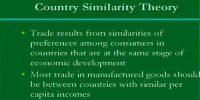International trade is the exchange of goods and services between countries. This type of trade gives rise to a world economy, in which prices, supply, and demand are affected by global events. International trade contributes a significant portion for a nations total GOP. Business organizations get a high level of privilege during operating in the international market.
There are two theories of trade: They are:
- Classical theory,
- Modem theory.
Classical theory: This theory is known as the “Basic Theory” of international trade. In this theory, the basic or primary reasons of trade and the determination of international market price are described. This theory is renowned as the “Absolute Advantage theory”. The father of “Economics” Adam Smith first introduces the “theory of Absolute Advantage” in explaining the basis of international trade. Later, David Ricardo provides a developed explanation of this theory which is known as “Comparative Advantage Theory”.
In the “Comparative Advantage Theory”, we get reformed and organized view of classical theory. Therefore, “Comparative Advantage Theory” known as the classical theory of international trade.
Modern Theory –
Modem Theory of international trade is the reformed or rectified version of the classical theory. The addition and correction of Ricardian theory by the classical economists are reconsidered in modern theory. Prof. F.W. Taussig, G.V. Haberler, Eli Heckscher, Berth Ohlin are the famous modern economists who stated the modern theory or basis of international trade. Prof. Ohlin gives a new thought in explaining international trade, therefore, the Heckscher-Ohlin model is known as the modern theory of international economics.















